Why Your Hair Feels Rough and Dull Every Morning – Causes & Overnight Fixes
1. Introduction: The Mystery of Morning Hair
- Why it’s so normal to wake up to hair that’s rough and lifeless
- You’re not alone if you’ve ever woken up, looked in the mirror, and asked yourself, “What happened to my hair while I was sleeping?” Even for those who maintain a good hair care regimen, morning hair problems are very prevalent. Biology, environment, and lifestyle all play a part in the frizz, dryness, or tangled mess you see when you wake up.
- rough and dull hair in the morning Your hair is not at all resting throughout the night. The strands create friction on your pillow while you toss and turn. The outside protective covering of each hair strand, known as the cuticles, is lifted by this abrasive touch, giving the hair a gritty, lifeless sensation.
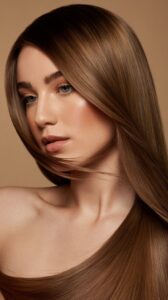
- There are environmental factors as well. Hair might get dehydrated in the morning due to moisture removal from air conditioners, heaters, or even just a fan running all night. Because textured hair is more likely to become dry and frizzy if left unprotected, the problem is exacerbated for persons with naturally curly or wavy hair. Simply because the natural oils from your scalp haven’t had time to evenly spread throughout the strands, even healthy hair can look lifeless in the morning.
- According to trichologists, specialists in hair and scalp care, roughness in the morning is typically not an indication of irreversible harm, but it is a clue that your sleeping patterns and surroundings may need to be adjusted.
- How overnight routines impact the luster and structure of hair
- Lackluster morning hair might be caused by your nighttime routine, however genetics and hair type also play a part. The kind of pillowcase you use for sleeping can have a significant impact. For instance, cotton pillows absorb your hair’s natural oils and moisture, leaving it dry by morning. Satin or silk pillows, on the other hand, assist keep your hair hydrated and prevent friction, which makes your hair smoother when you wake up.
- Having your hair loose while you sleep might also cause issues. Your hair becomes stressed and tangled as you move during the night, especially if you have long hair.
- Another common but overlooked habit is going to bed with wet hair. While it might seem harmless, damp hair is more fragile because the cuticles are swollen with water. This makes them more vulnerable to breakage from movement during sleep. Additionally, sleeping with wet hair can lead to scalp issues if moisture gets trapped, encouraging fungal growth or dandruff.
- Finally, the products you don’t apply at night can be as important as the ones you do. A nourishing leave-in conditioner, light hair oil, or overnight hair mask can create a protective barrier, locking in moisture and shielding your strands from damage while you sleep.
2. Common Causes of Rough & Dull Hair in the Morning
2.1 Loss of Natural Moisture Overnight
- How sleep deprives hair of moisture
- Despite its static, lifeless appearance, hair is always interacting with its environment, even when you’re asleep. The cuticle layer that covers each strand helps seal in moisture and natural oils. Nevertheless, a number of things can upset this equilibrium during night.
- Friction comes first. Your hair scrapes against your pillowcase as you move about as you sleep, causing microscopic cracks in the cuticle. By morning, the strands are scratchy because of these holes, which make it easier for moisture to leave. Specifically, cotton pillowcases function as a sponge, removing not just surface moisture but also the natural oils your scalp secretes to maintain the softness of your hair.
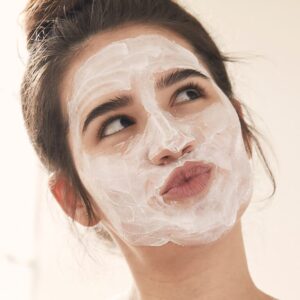
- How sleep deprives hair of moisture
- Despite its static, lifeless appearance, hair is always interacting with its environment, even when you’re asleep. The cuticle layer that covers each strand helps seal in moisture and natural oils. Nevertheless, a number of things can upset this equilibrium during night.
- Friction comes first. Your hair scrapes against your pillowcase as you move about as you sleep, causing microscopic cracks in the cuticle. By morning, the strands are scratchy because of these holes, which make it easier for moisture to leave. Specifically, cotton pillowcases function as a sponge, removing not just surface moisture but also the natural oils your scalp secretes to maintain the softness of your hair.
- The second factor is body heat. Evaporation causes your scalp and hair to naturally lose some moisture, particularly when you sleep in a warm or dry environment. This gradual loss builds up over six to eight hours, and the difference is noticeable in the morning when hair looks more frizzy, brittle, and uncontrollable.
- The cuticle layer may be more porous if your hair has already been harmed by heat styling or chemical treatments, which speeds up moisture loss over night. This explains why some people’s hair feels noticeably harsher in the morning than it did the previous day.
Role of air conditioning, fans, and dry air
- The conditions in your bedroom have a big impact on how moisturized your hair stays while you sleep.
- Although it is comfortable, air conditioning drastically lowers the air’s humidity. It seeks to restore equilibrium when the air is dry by absorbing moisture from all sources, including your skin and hair.
- Those with fine, curly, or coily hair may experience this dehydration effect more than others.
- In a similar vein, standing and ceiling fans may also have a drying impact. Your hair loses water content and natural oils due to increased evaporation caused by the continuous air movement.
- Over the course of one night, this might not seem like much, but frequent exposure builds up and eventually causes a loss of softness and shine.
- Heating systems can be equally problematic during the winter months. They reduce indoor humidity, creating a climate more analogous to that of a desert. This results in brittleness, increased static, and trouble holding onto moisture in hair.
- Living in areas with naturally low humidity, where the air lacks the moisture required to keep hair hydrated, makes the issue even worse. Your hair fights dryness every night if you don’t take action, such as using a humidifier or applying a protective treatment before bed.
2.2 Pillowcase Friction
- Why frizz and dullness are caused by cotton pillows
- Your pillow may appear soft and innocuous, yet it can do damage to your hair every night. The most popular kind of pillowcases, made of cotton, are quite absorbent. This indicates that they extract moisture and natural oils from your hair in addition to wicking away perspiration. The strands become dry, brittle, and more likely to break as a result of this nocturnal absorption, which gradually deprives them of vital moisture.
- However, there are other issues besides moisture loss. Although cotton feels smooth to the touch, its surface is slightly rough. Your hair creates friction with the pillowcase as you toss and turn while you sleep.
- The problem is especially obvious for curly or textured hair. For curls to stay defined, hydration and healthy cuticles are essential. This structure is upset by friction, which causes curls to flatten, lose their shape, and become frizzy. Cotton pillowcase friction can also cause fine-haired people’s hair more likely to break, resulting in split ends.
- To put it briefly, cotton pillowcases are pleasant for your skin, but they can be quite damaging to your hair, especially if you don’t take precautions.
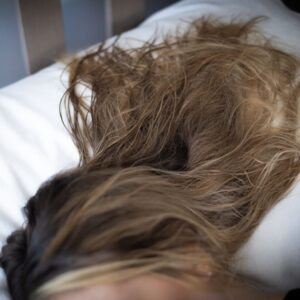
- Benefits of switching to silk or satin
- Silk and satin are the heroes in this overnight tale, if cotton is the bad guy. The low-friction, smooth surfaces of both materials make it easy for hair to move while you sleep. Your hair will still be silky and shiny in the morning because of the decreased friction that helps maintain the cuticle.
- Made from natural fibers, silk pillowcases are softer and less absorbent than cotton. As a result, the natural oils in your hair remain where they should be, on your strands, nourishing and moisturizing them. Additionally, premium silk regulates body temperature, promoting a comfortable sleeping environment without exacerbating dryness.
- Similar hair-protecting advantages are provided by satin pillowcases, which are often comprised of polyester or a blend of fibers and are more reasonably priced. Satin’s slick texture reduces tangles and breakage even if it lacks silk’s inherent ability to regulate temperature.
- Making the switch to satin or silk pillowcases is an easy adjustment that can have a big impact in a matter of weeks. You could notice that your hair is shinier, feels softer, and needs less morning detangling. This switch can be a game-changer for people who struggle with frizz, as it eliminates the need for harsh style products or heat tools to control unkempt hair.
2.3 Sleeping with Wet or Unprotected Hair
- Although it could feel soothing to go to bed immediately after taking a shower, it’s not the best option for your hair. When the cuticle layer swells due to water absorption, damp hair is at its most vulnerable since the strands are softer and more likely to stretch, tangle, and break. The contact between your pillow and hair when you sleep can seriously harm your hair by roughening the cuticle surface and breaking weaker strands.
- Furthermore, sleeping with damp hair raises the possibility of scalp problems. The ideal conditions for fungal development are created by the combination of moisture, warmth from your head, and airflow obstruction. Dandruff, itching, and even scalp infections can result from this.
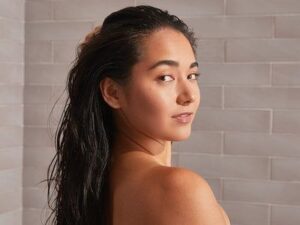
- You might also observe that your hair dries in strange patterns or with more frizz if you usually sleep with wet hair. You may wake up with flattened portions, odd bends, or untidy kinks that are difficult to style because the hair cuticle stays open longer when wet, making it more susceptible to the pressure and direction it is exposed to throughout the night.
- It can lead to long-term damage even if you believe your hair is only “slightly damp” before bed. Your hair may eventually appear harsh and lifeless due to cuticle erosion brought on by the frequent cycle of swelling and drying.
- Why hair wraps or braids might be beneficial
- Protective styling can be quite beneficial if it is not possible to prevent having wet hair before bed, possibly because of hectic schedules or late-night workouts. For instance, loose braids reduce friction by keeping your hair in check and avoiding excessive rubbing on your pillowcase. Additionally, they lessen tangling, which means that there will be less breakage while detangling in the morning.
- Curly and wavy hair benefit greatly from braiding since it keeps curl definition and minimizes frizz over night. Instead of using a tight elastic that can cause stress and breakage at the ends, go for a low, loose braid that is held with a soft fabric scrunchie for optimal results.
- Bonnets and hair coverings are also good options. You can create a smooth barrier between your hair and the pillow by wearing a satin hat or wrapping your hair in a silk or satin scarf. In addition to lowering friction, this retains moisture, avoiding the dryness brought on by fans or cotton pillowcases.
- For partially dried hair, some people also use soft T-shirt wraps or microfiber hair towels. Without roughening the cuticle, these materials absorb excess water and are soft. This additional layer of defense can lessen the harm if you have to sleep with wet hair.
2.4 Product Build-Up and Improper Washing
- What you left on your hair the day before can also impact its structure in the morning, in addition to what happens over night. When shampoos, conditioners, oils, serums, hairsprays, or styling creams leave behind residues that don’t completely rinse out, it’s known as product buildup. These layers build up on the scalp and hair shaft over time, giving the area a lifeless, hefty, and occasionally oily look.
- In order to coat the hair for smoothness and shine, shampoos and conditioners frequently contain silicones, waxes, or conditioning ingredients. Although they can initially make hair seem softer, too much residue prevents moisture from getting to the strand, which eventually leaves the hair feeling coated on the surface but dry on the inside. The outcome? Hair that feels “smooth” on the outside but appears rough and lifeless.
- Styling products like gels, mousses, or hairsprays can be even more stubborn. Many are designed to create hold or texture by forming a film over the hair — which can cling tightly if not thoroughly washed out. Overnight, this coating attracts dust, pollutants, and sweat, making hair feel gritty and lacklustre by morning.
- Even natural oils and butters can cause build-up when overused. Without proper cleansing, they layer up, weighing hair down and disrupting its natural bounce. This can also make tangles worse, as sticky or coated strands tend to knot more easily.
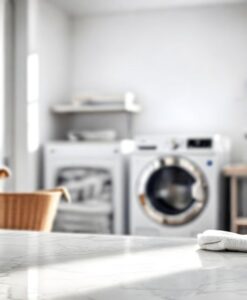
- Importance of proper cleansing and clarifying
- Balanced and comprehensive cleansing is the key to avoiding product buildup. Although stripping your hair every day is not necessary, maintaining a healthy texture requires using the proper shampoo at the right time.
- For frequent washes, a gentle shampoo without sulfates is ideal since it gets rid of light residue and common dirt without making the hair too dry.
- However, it’s appropriate for a clarifying treatment when buildup becomes apparent, such as when your hair feels heavy, appears lifeless, or doesn’t style well.
- Stronger cleansing ingredients included in clarifying shampoos are capable of efficiently removing silicones, excess oil, and sticky residue layers.
- Depending on your hair type and how frequently you use styling products, experts advise using them once every two to four weeks.
- Using the right washing method is also important. Many people merely shampoo their hair lengths, although the majority of product residue and natural oil buildup occurs on the scalp.
- In addition to guaranteeing a deeper clean, massaging the scalp well during shampooing increases circulation and promotes healthier hair development.
- Thorough rinsing is also crucial. Spend an additional minute under the water to make sure all of the substance is washed away because even the greatest shampoo might leave residue if it isn’t completely removed. To restore moisture to the strands without applying thick coatings, use a mild conditioner after cleansing.
2.5 Heat and Chemical Damage from the Day Before
- What you did to your hair the day before often determines its structure in the morning, and two of the main causes of weakening strands are heat style and chemical treatments.
- In order to restructure hair, heat styling appliances like blow dryers, curling irons, and straighteners temporarily break down hydrogen bonds in the hair shaft.
- This procedure eliminates moisture from the inside of the strand while giving you smooth styles or bouncy curls. Heat tools can damage the cuticle structurally, leaving it harsh, raised, and unable to hold onto moisture if they are used excessively or at high temperatures.
- Hair coloring, bleaching, perming, and chemical straightening are examples of chemical treatments that go even further.
- These procedures change the color or structure of the hair and destroy its natural attachments. For instance, bleaching causes protective proteins to dissolve and melanin to be stripped from the hair, leaving the strands more porous and brittle.
- Your hair will lose moisture more easily and be more likely to break and frizz out if it is more porous.
- If used frequently, even “milder” color treatments or semi-permanent colors can cause cumulative damage. Heat style and chemical processing exacerbate the problem since they make already fragile hair more susceptible to damage.
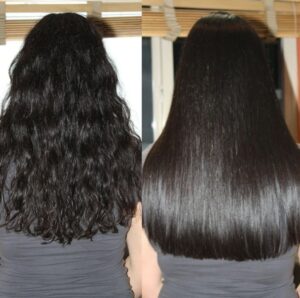
- How coloring, curling, and straightening weaken hair
- What you did to your hair the day before often determines its structure in the morning, and two of the main causes of weakening strands are heat style and chemical treatments.
- In order to restructure hair, heat styling appliances like blow dryers, curling irons, and straighteners temporarily break down hydrogen bonds in the hair shaft. This procedure eliminates moisture from the inside of the strand while giving you smooth styles or bouncy curls. Heat tools can damage the cuticle structurally, leaving it harsh, raised, and unable to hold onto moisture if they are used excessively or at high temperatures.
- Hair coloring, bleaching, perming, and chemical straightening are examples of chemical treatments that go even further. These procedures change the color or structure of the hair and destroy its natural attachments. For instance, bleaching causes protective proteins to dissolve and melanin to be stripped from the hair, leaving the strands more porous and brittle. Your hair will lose moisture more easily and be more likely to break and frizz out if it is more porous.
- If used frequently, even “milder” color treatments or semi-permanent colors can cause cumulative damage. Heat style and chemical processing exacerbate the problem since they make already fragile hair more susceptible to damage.
- Why damage shows most in the morning
- Your hair is impacted by heat and chemicals all day long, although it is frequently most noticeable in the morning.
- This is because damaged hair loses its ability to retain moisture and form over night. Frizz, knots, and an uneven texture are caused by contact between the roughened cuticle and the pillow fibers.
- Shine is produced by the smooth cuticle of healthy hair reflecting light. When you wake up, damaged hair looks lifeless and drab because of its jagged cuticle, which scatters light.
- Damaged strands, which already lack the protective lipid layer to seal hydration in, magnify any moisture loss that occurs during the night, whether from air conditioning, low humidity, or simple evaporation.
- Because bond disruption prevents the hair from returning to its original shape after being disturbed overnight, morning frizz is most visible in chemically treated or heat-styled hair. For instance, if you straightened your hair the day before, you may discover kinks or bends in the morning. Likewise, curling it might have caused the curls to become fuzzy or fall flat.
- In extreme situations, overnight movement may result in micro-breakage in weak spots in the strand, making morning hair feel harsher than it did the previous evening. Over time, this damage builds up, making it more difficult to keep the shine and smoothness even after styling.
3. Overnight Fixes for Soft, Shiny Morning Hair
3.1 Apply a Lightweight Leave-In Conditioner or Hair Serum
- How it retains moisture during the night
- Applying a light leave-in conditioner or hair serum before bed is one of the easiest yet most efficient ways to deal with rough, lifeless hair that wakes you up every morning. These products function as a nightly shield, retaining the natural moisture in your hair while acting as a barrier against environmental elements, friction, and dryness that cause frizz and roughness in the morning.
- Leave-in conditioners are designed to remain on your hair and continue to function while you sleep, in contrast to rinse-out conditioners. They usually contain emollients, which soften and smooth hair, humectants, which draw and hold moisture, and occasionally proteins, which strengthen fragile hair structure. By morning, your hair will be shinier, feel softer, and be easier to manage thanks to this combination.
- A lightweight formula is especially important for overnight use. Heavy products can weigh hair down, leave a greasy residue, or cause buildup, especially if you don’t wash your hair daily. The goal is to coat your strands just enough to lock in hydration without making them limp or sticky.
- Applying a leave-in conditioner at night can be as simple as working a small amount through damp or dry hair, focusing on the mid-lengths and ends — the areas most prone to dryness and damage. By the time you wake up, the product has had several uninterrupted hours to penetrate and protect, leaving you with softer, smoother hair that requires less morning styling.
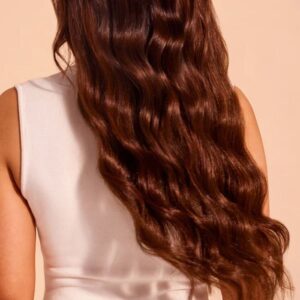
- Ingredients to look for: argan oil, aloe vera, keratin
- Not all leave-in serums and conditioners are made equally. Look for elements that strengthen, smooth, and moisturize without adding too much weight for overnight care.
- Rich in fatty acids and vitamin E, argan oil is frequently referred to as “liquid gold” since it nourishes hair and aids in damage healing. It locks in moisture and adds shine by covering the hair shaft with a thin, non-greasy coating.
- Aloe Vera: Known for its calming and moisturizing qualities, aloe vera is a water-rich, light substance that adds moisture without feeling heavy. Over time, healthy hair development is encouraged by the natural enzymes in it, which help maintain the health of the scalp.
- One of the main structural elements of hair is the protein keratin. Keratin smoothes frizz, increases suppleness, and strengthens weak strands when added to leave-in products. Particularly hydrolyzed keratin has the ability to enter the hair shaft and momentarily fix surface damage.
- Other helpful ingredients can include panthenol (a pro-vitamin B5 for softness and shine), glycerin (a potent humectant), and light plant oils like grapeseed or jojoba for further nourishment.
- For overnight use, steer clear of leave-ins that contain a lot of mineral oil or petroleum-based substances because they might eventually obstruct moisture absorption and make you feel greasy in the morning.
3.2 Switch to Silk or Satin Pillowcases
- How they reduce friction and help maintain shine
- Changing your standard cotton pillowcase to a silk or satin one is one of the simplest and most efficient ways to enhance your morning hair. The fabric your hair lies on for six to eight hours every night has a significant effect on its health, texture, and shine, despite the fact that it may seem like a little issue.
- Although they feel smooth to the touch, cotton pillowcases feature a rough weave that somewhat rubs against your hair. The outer layer of each hair strand, known as the cuticle, becomes roughened by shifting positions while you sleep, resulting in frizz, tangles, and a lifeless look in the morning.
- In contrast, the smooth, slick surface of silk and satin pillows makes it easy for hair to wander about when you’re moving. This keeps the cuticle flat and undamaged by significantly lowering friction. Hair tends to appear shinier and healthier when you sleep on these textiles because the cuticle reflects light more evenly when it lies smoothly.
- The difference might be striking for those with wavy or curly hair. The structure of curly hair makes it more difficult for scalp oils to move down the hair shaft, which increases the likelihood of dryness and frizz. Overnight use of silk or satin helps maintain curl definition, reducing the need for morning restyling. A smoother finish and fewer tangles are advantageous for even people with straight hair.
3.2 Switch to Silk or Satin Pillowcases
- How they help preserve shine and lessen friction
- Changing your standard cotton pillowcase to a silk or satin one is one of the simplest and most efficient ways to enhance your morning hair. The fabric your hair lies on for six to eight hours every night has a significant effect on its health, texture, and shine, despite the fact that it may seem like a little issue.
- Although they feel smooth to the touch, cotton pillowcases feature a rough weave that somewhat rubs against your hair. The outer layer of each hair strand, known as the cuticle, becomes roughened by shifting positions while you sleep, resulting in frizz, tangles, and a lifeless look in the morning.
- In contrast, the smooth, slick surface of silk and satin pillows makes it easy for hair to wander about when you’re moving. This keeps the cuticle flat and undamaged by significantly lowering friction. Hair tends to appear shinier and healthier when you sleep on these textiles because the cuticle reflects light more evenly when it lies smoothly.
- The difference might be striking for those with wavy or curly hair. The structure of curly hair makes it more difficult for scalp oils to move down the hair shaft, which increases the likelihood of dryness and frizz. Overnight use of silk or satin helps maintain curl definition, reducing the need for morning restyling. A smoother finish and fewer tangles are advantageous for even people with straight hair.
- Additional benefits beyond hair health
- Silk and satin pillowcases have additional advantages for your skin, even though hair is the main focus here. They assist your skin keep its natural moisture content and any skincare products you use at night because they are less absorbent than cotton. Additionally, the smooth surface pulls less on the sensitive skin of the face, which may lessen the chance of sleep wrinkles, which over time may exacerbate fine lines.
- A natural textile with temperature-regulating qualities, silk keeps you warm in the winter and cool in the summer. Though it may not offer the same thermal advantages as silk, satin, which is usually comprised of polyester or a fiber combination, nevertheless gives your hair the smooth texture it needs. It is also normally more reasonably priced and machine-washable.
3.3 Hydrate Hair with Overnight Masks Once a Week
- Top store-bought and do-it-yourself options
- An overnight hair mask once a week might be a huge help if your morning hair frequently feels frizzy, dry, or brittle. Overnight masks are made to provide a larger concentration of nourishing nutrients, which enables them to deeply permeate the hair shaft while you sleep, in contrast to everyday leave-in conditioners. Your hair will be softer and glossier when you wake up because to this extended contact time, which also helps to repair damage and restore lost moisture.
- A mixture of moisturizing oils, butters, proteins, and humectants is frequently found in store-bought masks. Seek out recipes that include items like:
- For extreme moisture, use coconut oil or shea butter.
- Glycerin or hyaluronic acid for intense hydration
- Hydrolyzed silk or keratin proteins for reinforcement
- Jojoba or argan oil for smoothness and luster
- Premium masks are typically referred to as “overnight” or “leave-in,” indicating that they are safe to wear for a number of hours without causing irritation or accumulation.
- DIY hair masks might work just as well if you want a more organic look. Here are a few tried-and-true recipes:
- Lightweight hydration with aloe vera gel and argan oil to reduce frizz
- Honey and bananas are high in potassium and sugars that bind moisture.
- For fragile hair, Greek yogurt and olive oil provide deep conditioning and protein.
- Selecting components for DIY masks that are appropriate for your hair type is crucial. For instance, coarse or curly hair can withstand richer butters and heavier oils, whereas fine hair prefers lighter oils like argan or grapeseed.
4. Morning Habits to Revive Hair Instantly
- Waking up with dull, frizzy, or lifeless hair doesn’t mean you have to spend hours fixing it. By adopting a few quick morning habits, you can revive your strands, restore shine, and step out with confidence — without causing long-term damage.

- Shine-enhancing brushing techniques
- Brushing is more than simply detangling; with the correct technique, it may also redistribute natural oils from the scalp along the hair shaft, giving it a natural sheen. Using the right brush and technique is the key.
- The natural strands of a boar bristle brush help distribute sebum evenly, giving hair a healthy, glossy appearance without the need for additional products. Work in long, smooth strokes toward the ends, starting at the scalp. This lowers static, promotes scalp health, and increases blood flow.
- Avoid dry brushing if you have wavy or curly hair to avoid frizz. Instead, use a detangling brush or wide-tooth comb on slightly damp hair, preferably after spritzing it with a detangling spray or a light leave-in conditioner.
- Quick shine-boosting sprays
- Shine sprays or gloss mists can give your hair a little boost if it still appears lifeless after combing. Choosing non-greasy, lightweight solutions that won’t produce buildup or detract from your style is crucial.
- To improve light reflection and smooth the hair cuticle, look for sprays that contain silk proteins, jojoba oil, or argan oil. Focus on the mid-lengths and ends, which tend to look the dullest in the morning, and hold the bottle 8 to 10 inches away while lightly misting.
- Aloe vera juice and a few drops of light oil (such as grapeseed or sweet almond) can be combined in a spray bottle to create a DIY shine mist, which is a natural substitute. To rapidly revitalize and nourish your hair, shake well before using and spritz gently.
- After taking out a braid or bun, these sprays are particularly effective in giving hair a glossy, new look without the need for washing.
- Avoiding heat styling every morning
- Using heat tools every day to correct texture problems is one of the worst morning hair blunders. While blow dryers, curling wands, and straighteners might produce immediate effects, they can weaken hair over time by removing moisture and breaking down proteins. This eventually causes additional morning frizz, which feeds the damaging cycle.
- Instead, try heatless style techniques like satin rollers for curls, overnight braids for waves, or just putting wet hair in a loose bun for volume. These choices lessen the need for frequent product application, save time, and maintain the health of the hair.
- To reduce damage, always use a heat protectant spray and maintain your instruments at the lowest possible temperature if you must use heat sometimes.
5. Conclusion: Wake Up to Your Best Hair Every Day
- Healthy, gorgeous morning hair is the result of regular, thoughtful care that blends the proper overnight routine with astute morning routines; it is not the product of a single miracle product or one-time fix.
- Preparing your hair while you sleep and gently revitalizing it when you get up are the keys. Overnight, your hair is most sensitive to moisture loss, friction, and knots. You create the conditions for silky, silky hair in the morning by shielding it with a satin pillowcase, a loose braid, or a nourishing leave-in treatment. Deep treatments like moisturizing masks applied once a week provide an additional line of protection against dullness and dryness.
- Next is your morning ritual, which is the time to rejuvenate without causing undue stress to your hair. Your hair may look and feel different throughout the day with a little brushing to distribute natural oils, a brief mist to add shine, and the deliberate decision to avoid everyday heat style. These actions assist you prevent long-term damage and preserve the inherent resilience of your hair in addition to providing immediate results.
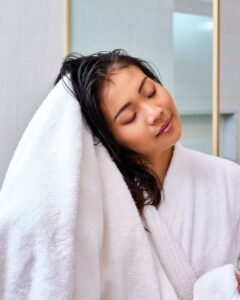
The power of consistency
- One of the most frequent errors people make is to approach hair care as a reactive procedure, only taking care of issues after they arise. In actuality, being proactive yields the finest outcomes. Hair care benefits from little, consistent acts rather than intermittent effort, much like skincare or fitness.
- Over weeks and months, even the most basic adjustments, like applying a heat protectant, brushing carefully, or moving to a silk pillowcase, can have a cumulative effect. Your hair strengthens, heals, and adapts with regular use, eliminating dreary, difficult mornings.
- Encouragement to stick with your routine
- If you’ve ever moaned at frizz or limpness when you looked in the mirror in the morning, know that you can change that. After a few weeks of consistent care, you’ll notice that your hair feels softer, looks shinier, and behaves better first thing in the morning. The transformation won’t come overnight, as the saying goes.
- Consider your morning and evening routines as a collaboration:
- Nighttime care ensures your hair is safeguarded, nourished, and hydrated while you sleep.
- Your style is revitalized and refreshed by your morning routine without inflicting more harm.
- When combined, they produce a cycle of maintenance that turns having excellent hair into your new normal rather than a lucky day.
FAQS
1. Why does my hair feel rough every morning?
Hair often loses moisture and smoothness overnight due to friction with your pillowcase, dry indoor air, and leftover styling products. This makes it feel coarse and dull by morning.
2. Does sleeping with wet hair damage it?
Yes. Wet hair is weaker and more prone to breakage. Sleeping with damp hair can lead to tangles, split ends, and scalp issues.
3. Can my pillowcase material affect my hair’s smoothness?
Absolutely. Cotton pillowcases absorb natural oils and create friction, leading to frizz. Silk or satin pillowcases help maintain moisture and reduce tangles.
4. How does air conditioning affect my hair overnight?
AC reduces humidity in the room, causing hair to lose hydration faster. This can lead to dry, brittle strands in the morning.
5. What products should I use before bed for soft morning hair?
A lightweight leave-in conditioner or serum with ingredients like argan oil, aloe vera, or keratin works best to lock in moisture without making hair greasy.
6. How can I avoid tangles while sleeping?
Opt for loose braids, a satin hair wrap, or a silk pillowcase to reduce friction and keep hair smooth overnight.
7. Is product build-up a reason for dull hair in the morning?
Yes. Residue from shampoos, conditioners, and styling products can weigh hair down and block natural shine. Use a clarifying shampoo once every 2–3 weeks.
8. Will overnight hair masks make my hair oily?
Not if applied correctly. Focus the mask on mid-lengths and ends, avoid the roots, and use once a week for best results.
9. Should I brush my hair before bed or in the morning?
Both. A gentle brush before bed distributes natural oils, while morning brushing revives volume and shine. Use a wide-tooth comb or boar bristle brush.
10. Can heat styling the night before cause dullness the next morning?
Yes. High heat weakens hair’s cuticle layer, and damage is often more visible after a night’s rest. Always use heat protectant and avoid excessive styling.
